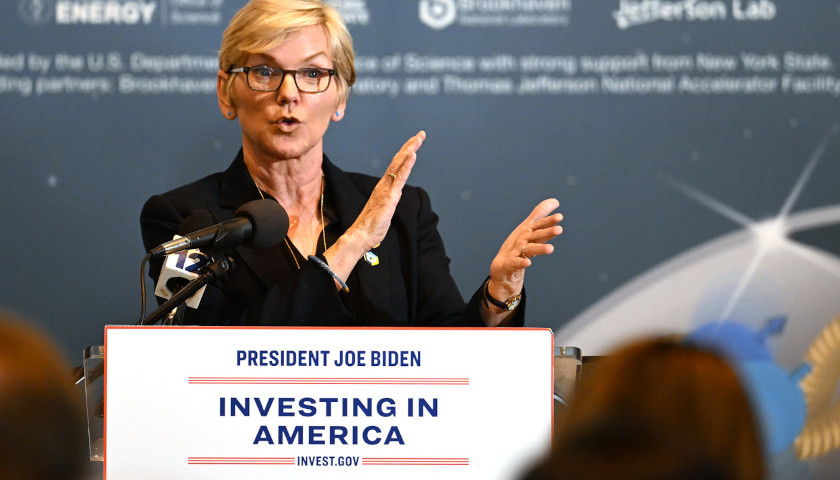by Paul Kengor
Clarks Mills, Pennsylvania
Driving through this rural area late Thursday morning, nine days after Election Day, it’s clear the extraordinary enthusiasm for Donald Trump has not waned. “TRUMP 2020: NO MORE BULLS—” remains a popular sign, as does “DRAIN THE SWAMP,” as does a placard protesting Gov. Tom Wolf and Pennsylvania Democrats: “FIRE THE LOCKDOWN LIBERALS!” Trump flags fly alongside the American flag in front yards. As usual, there’s not a Biden–Harris sign for miles. Ask folks in these parts, and they’ll tell you that Donald Trump couldn’t have possibly lost Pennsylvania.
“There’s no way,” says Marty, a 55-year-old president of a manufacturing company down the road, off Rt. 79. He attended the massive Trump rally in Butler, which drew an estimated 58,000. “I will go to my grave believing this election was stolen through mail-in ballots.”
Marty works with the huge Shell Chemical ethane cracker plant being built in nearby Beaver County — the largest construction project underway in North America. The $5 billion–plus project will create almost 20,000 jobs in the area. It’s a symbol of how the energy sector and fracking have resurrected once-dead mill-towns like Monaca, Pennsylvania.
“A buddy of mine there tells me that there’s a not a guy in that plant who didn’t vote for Donald Trump,” says Marty of the 5,000-employee factory. “And those are just the guys at the plant. Add in their families and the various support industries. It’s doesn’t add up. There’s no way that Donald Trump lost Pennsylvania. It’s statistically impossible.”
At the least, it’s statistically hard to imagine. Consider these numbers:
The morning of the election, Donald Trump trailed Joe Biden in the RealClearPolitics national average by 7 percent. The actual difference (as I write) is 3.4 percent. Trump outperformed by 3.6 percent. Everyone in Pennsylvania figured Trump would achieve at least a 5 percent overperformance in Pennsylvania polls, especially given Trump’s relentless campaigning here, his booming popularity, and Biden’s (not to mention Kamala Harris’s) suicidal statements on the energy and fracking industry. The RCP average for Pennsylvania the morning of the election was Biden +1.2 percent, with Trump besting Biden in three of the latest polls by Susquehanna (+1), Insider Advantage (+2), and Trafalgar (+2). Trump was surging; the man was on fire in Pennsylvania.
And how did Trump ultimately do in Pennsylvania? He’s currently losing to Biden by 0.8 percent (49.8 to 49.0 percent).
In other words, Donald Trump vastly outperformed his numbers nationally but vastly underperformed them in Pennsylvania. And if you believe that, then I have a thousand acres of farmland to sell you in Philadelphia.
The numbers seem even more improbable when you compare 2020 to 2016:
In 2016, Hillary Clinton was favored to win Pennsylvania in the RealClearPolitics average by 1.9 percent. Trump outperformed that easily, by 2.6 percent. And somehow in 2020, even with Biden’s statements on fracking, Trump is allegedly underperforming by 2.0 percent.
As for total vote margins, Trump beat Hillary in Pennsylvania by 44,000 votes but is losing to Biden by 55,000 votes (and counting).
Does this make sense? To people around here, no. Nor for a lot of pundits around the country. It’s why many are suspicious.
Pollster Robert Cahaly of the Trafalgar Group said weeks ago that Donald Trump in 2020 would “need to win Pennsylvania by four or five [percentage points] to overcome the voter fraud that’s going to happen there.”
That’s a very common sentiment among Trump supporters here. The night of the election, I marveled to a Trump supporter in Montgomery County that the Donald was trouncing Sleepy Joe by over a half million votes, or 58 to 41 percent, a seemingly insurmountable margin for Biden. The Trump supporter sighed, “He may need even more than that. To overcome the Philadelphia machine, Trump may need another 300,000.”
Not possible, I reassured him. Joe Biden could not and would not catch those numbers. Well, according to the current vote tabulation, he did. That tabulation includes another shocking number: Donald Trump has nearly 400,000 more votes in Pennsylvania in 2020 than he got in 2016. Yet somehow, that will not be enough for him to carry the state. No-enthusiasm-Joe has 465,000 more (and counting) than Hillary totaled in Pennsylvania in 2020.
“I don’t believe it,” says Marty. “No way. This has to be fraud, from Erie to Philly.”
The mention of Erie is no coincidence.
When I saw Erie County painted blue on CNN’s county map of Pennsylvania, I grabbed the TV controller and froze the screen and stared in disbelief.
Donald Trump beat Hillary Clinton by 2 percent in Erie in 2016. He received 57,168 votes. In 2020, he’s losing to Biden in Erie by 1.0 percent. The Democrats (Hillary) got 54,820 votes in Erie County in 2016. In 2020, the Democrats (Biden) got 68,336 votes in Erie. Look at that increase for Democrats from 2016 to 2020: almost 30 percent. That’s staggering for a county adorned with Trump signs.
“I was at the Trump rally in Erie,” observes Emily, a college student. “There literally were not enough busses to transport everyone there.” She asks with a bewildered look: “Where did all of those Biden votes come from?”
She’s not alone in her Biden bewilderment.
Of course, Erie right now is the subject of a major case of alleged fraud with mail-in ballots. The county is receiving national attention because of a sworn affidavit by postal worker Richard Hopkins, who said that Postmaster Rob Weisenbach directed him and co-workers to hand over ballots received after Election Day, which he then back-dated. “Weisenbach was back-dating the postmarks on the ballots to make it appear as though the ballots had been collected on November 3, 2020 despite them in fact being collected on November 4 and possibly later,” said Hopkins.
Liberals this week (including the Washington Post) pounced on Hopkins’ account as fake news, insisting he had “recanted” his story. Not at all. Hopkins stands by his story. “I’m here to say I did not recant my statements,” says Hopkins on video. “That did not happen.” He wants the Washington Post to recant its story.
And for every big story like that of Hopkins, there are an untold (and unreported) number of smaller cases in counties throughout the state.
I was contacted by Julianna Heiby, the judge of elections for a precinct in Washington County near the Allegheny County border. She reached out to me because she witnessed activity that she believes might constitute “fraudulent actions.” She has reported this information to the authorities.
“The county provided us with blank ballots for use in the voting machines,” Julianna told me. “After voting, the ballots are counted in the ballot box. The number of voters who signed our poll books matched the number of ballots cast: 1254 for our precinct.” As judge of elections, “one of my tasks at the end of the night is to account for all the ballots. We are told how many ballots are packaged in our equipment. We were, supposedly, given 2250 ballots, packaged into three bundles of 750 each. One bundle was used completely. One bundle was still sealed at the end of the night. Of the partially used package, 205 remained.” Her math: “We cast 1254 ballots on Tuesday. 1500 – 1254 = 246.”
There should have been 246, but in fact there were only 205. That means that 41 ballots were missing.
As Julianna put it, “41 unaccounted-for ballots may not seem like a big issue, but if 41 ballots are missing from many precincts, we now have a discrepancy worthy of attention.”
Julianna told me that she believes in retrospect that these 41 didn’t disappear at the precinct but, in fact, never arrived to begin with: “My guess is that the package of ballots arrived at our precinct incomplete. We got them from the Washington County Board of Elections, which delivers them to the precincts throughout the county. So, they would not have been missing or potentially taken while at my precinct but prior to arriving.” Says Julianna: “I don’t know for sure, and I can’t say for certain if they were stolen, but I do know that there were at least 41 missing.”
According to Julianna, “From what I can tell they are the same type of paper ballots and scanners that are used in Philadelphia.” She sent a link to the vendor site for the equipment that her precinct and county use (click here). “The ballots that were missing are this type,” says Julianna. “One thing to investigate would be which counties also used this system.” Julianna likewise included a link to the equipment used by counties throughout the Commonwealth of Pennsylvania (click here).
Julianna believes the number of 41 missing ballots for her precinct actually might be closer to 60, given that there were roughly 20 missing per box, and the third box she never opened (it likewise might have been missing 20). And here’s how a seemingly small number like 41 or 60 at one precinct could add up big-time in just one county in western Pennsylvania: There are 180 precincts in Washington County, and her precinct is a typical/average-size precinct. If 41 ballots on average were pulled from sleepy, unsuspecting precincts like hers, that could be as many as 7,380 ballots that could have ended up in Pittsburgh (just over the county border) or in Philadelphia or in Erie or another large city in Pennsylvania — that is, transported from Washington County, a major Trump county (a big fracking area), where Donald Trump won over 60 percent of the vote. If the number is 60, then it could have been as many as 10,800 ballots for just one of 67 counties.
Julianna is at the least suspicious. She is speaking up because she’s very troubled at what voter fraud would suggest about the voting process and democracy in our country. “I became a poll worker because I believe in the electoral process and our country and I want the elections to be run correctly,” she says. “I would report this discrepancy regardless of the results.”
For the record, I was contacted by Diana Irey, chairwoman of the Washington County Board of Elections, and an excellent public servant who I have known for years. Irey (a Republican) wants to make clear that any tampering with the pre-sealed ballot packages would not have taken place at the level of the Washington County Board of Elections. The county receives the ballot packages from a pre-sealed ‘manufacturer pack.’ Irey cannot confirm or deny Julianna’s claims of missing ballots in the pre-sealed packages. Irey wants readers to know that earlier in the year Washington County created a bipartisan Elections Review Committee to improve the process of how the county conducts elections. “We have already implemented 26 pages of higher standards of protocols and procedures, one of which resulted in our county having all votes counted by 11 p.m. election day,” says Irey. “This committee continues to operate and will be offering more suggestions for improvement post election. I believe it is important to note that I have reported several concerns of election activity to our District Attorney.”
How many discrepancies exist throughout the state? Truly no one knows, and there will be so many, with most seemingly minor, that likely no single smoking gun will emerge to convince the electorate (and partisan Democrats) that something fraudulent happened in Pennsylvania.
This much we do know: As the Trump campaign had warned months ago, mail-in balloting paved the way for this chaos; it opened the door to potential massive fraud. People who do this kind of work expected this mess. Not only do counties know the prospects for theft but so do countries. As Paul Bedard noted back in August in the Washington Examiner, this is why even the European Union bans mail-in balloting. “Most developed countries, especially in Europe, ban mail-in voting to fight vast fraud and vote buying that had threatened the integrity of their elections, according to an exhaustive review of voting rules and histories in over 30 major nations,” wrote Bedard. “In the European Union, 63% have put a ban on mailing in ballots except for citizens living overseas.”
To permit this process in the United States was idiotic, though perhaps not for those who had hoped and planned to exploit it. And as for Pennsylvania, mail-in ballots were catastrophic to the Trump campaign. As George Parry noted in his American Spectator piece before the vote last week, “Stealing Pennsylvania,” “Given Pennsylvania’s recently decreed rules for receiving and counting mail-in ballots, there may be no percentage of honest votes large enough to overcome the voter fraud already underway in the Keystone State.”
Indeed.
When I voted in person on Tuesday, November 3, I needed my ID and was required to write down my signature, as did everyone who walked in. Such procedures act as safeguards to protect elections and prevent fraud. For a striking indication of how ripe the process is for abuse, look at this data on mail-in ballots in the Commonwealth of Pennsylvania:
There have been 6.7 million Pennsylvania ballots cast for Biden and Trump. The proportion that came from mail-in ballots is eye-opening. There were 3,130,919 mail-in ballots issued to Pennsylvania voters. Of these, a staggering 2,643,485 were cast — in other words, nearly 90 percent were sent in. Yes, nearly 90 percent. This means that the opportunities to swing the election to Biden by a mere half-percent or so via mail-in balloting were legion. To leverage a final vote margin of 50,000 out of some three million would be a cinch.
“Prove it!” Democrats will bark. “Show us how Pennsylvania was stolen!”
They know that will be virtually impossible. Those with suspicions will be framed as crazy conspiracy theorists (and surely as racists as well). Nonetheless, people here in Pennsylvania are highly suspicious, and have every right to be. You’d be naïve not to be incredulous at these numbers that don’t seem to add up.
– – –
Paul Kengor is professor of political science at Grove City College in Grove City, Pa., and senior academic fellow at the Center for Vision & Values. Dr. Kengor is author of over a dozen books, including A Pope and a President: John Paul II, Ronald Reagan, and the Extraordinary Untold Story of the 20th Century, The Politically Incorrect Guide to Communism, and Dupes: How America’s Adversaries Have Manipulated Progressives for a Century.





